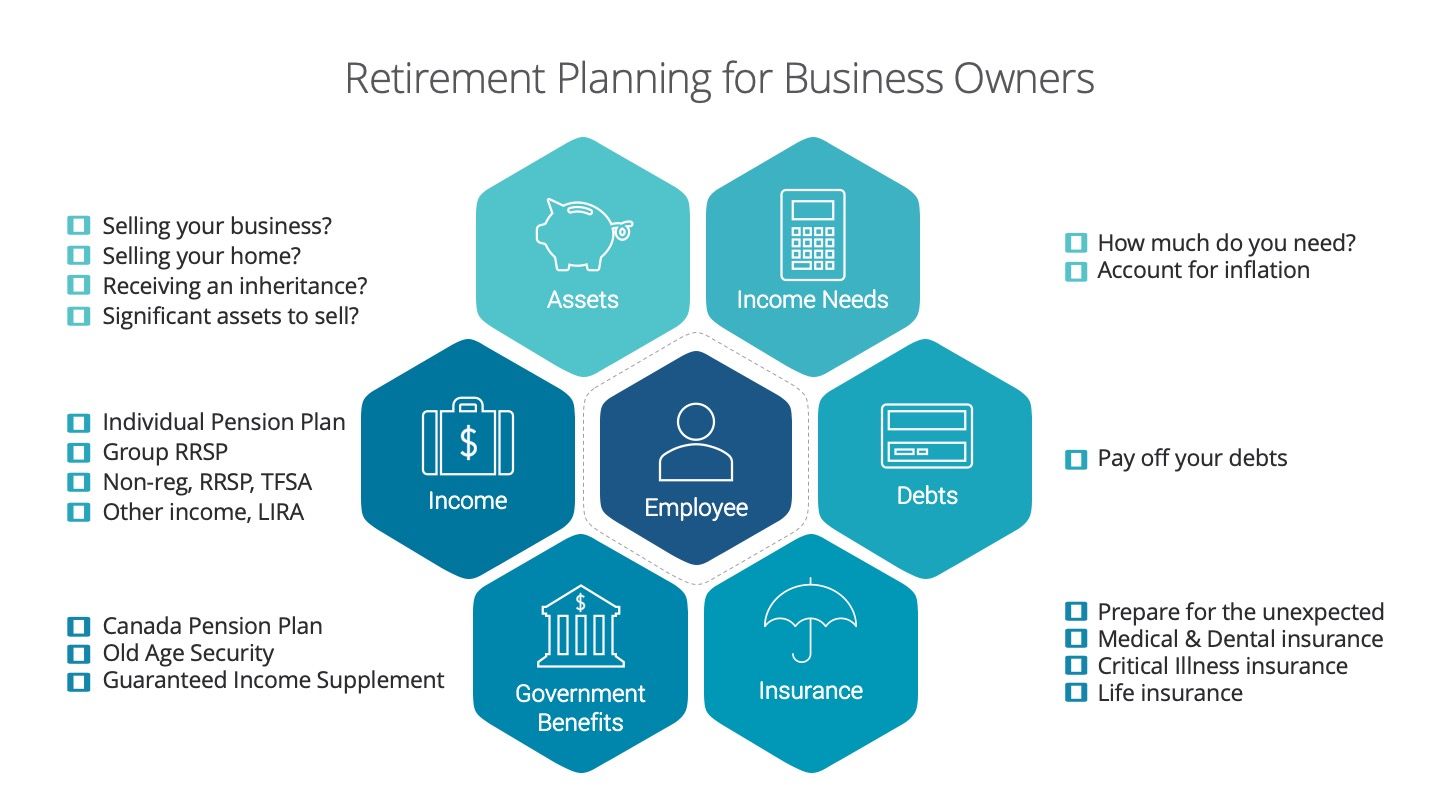Retirement Planning for Business Owners and Employees

Retirement planning is crucial for ensuring a financially stable and secure future. Without adequate planning, individuals may find themselves facing financial hardships during their retirement years. This is particularly true for business owners who are solely responsible for their retirement savings.
For employees, retirement planning is essential to ensure a comfortable lifestyle after they stop working. It allows them to set goals, determine the required savings, and make the necessary investments to achieve those goals.
Key Considerations for Business Owners
Business owners face unique challenges when it comes to retirement planning. Unlike employees, they do not have access to employer-sponsored retirement plans and contributions. However, there are several options available to them:
Simplified Employee Pension (SEP) IRA
A SEP IRA allows business owners to make tax-deductible contributions to their retirement savings, including contributions for employees. This is a popular choice for small business owners as it offers flexibility and ease of administration.
Solo 401(k)
A Solo 401(k) is designed specifically for self-employed individuals and business owners with no employees other than their spouses. It allows for higher contribution limits than a SEP IRA and can be an excellent option for those looking to maximize their retirement savings.
Defined Benefit Pension Plan
A Defined Benefit Pension Plan is a more complex option that may be suitable for business owners who want to contribute larger amounts towards their retirement savings. It can provide substantial tax advantages, but careful planning and actuarial calculations are necessary.
Considerations for Employees
While employees may have access to employer-sponsored retirement plans, it is still crucial for them to actively participate in the planning process. Here are some key considerations:
Contribute to Employer-Sponsored Plans
Take full advantage of employer-sponsored plans, such as 401(k) or 403(b) plans. These plans often include matching contributions from the employer, which can significantly boost retirement savings. Contribute the maximum allowed, if possible, to maximize the benefits.
Explore Individual Retirement Accounts (IRAs)
Individuals who want to save additional funds for retirement can consider opening an Individual Retirement Account (IRA). Traditional IRAs offer tax advantages for contributions made, while Roth IRAs provide tax-free withdrawals in retirement.
Diversify Investments
Diversification is vital for reducing risk and maximizing long-term returns. Employees should consider diversifying their retirement portfolio by investing in different asset classes, such as stocks, bonds, and real estate, based on their risk tolerance and investment goals.
Retirement Planning Mistakes to Avoid
Both business owners and employees should be aware of common retirement planning mistakes to ensure a smooth transition into retirement:
Procrastination
Delaying retirement planning can significantly limit the available options and the time to accumulate sufficient savings. It is essential to start planning as early as possible to take advantage of compounding growth and ensure adequate time for course corrections, if necessary.
Underestimating Expenses
Many individuals underestimate their retirement expenses, leading to inadequate savings. It is crucial to factor in healthcare costs, inflation, and potential long-term care needs when estimating retirement expenses.
Overlooking Social Security
Social Security benefits are an essential component of retirement income for many individuals. It is crucial to understand how Social Security works and create a strategy to maximize these benefits.
Failing to Review and Adjust the Plan
Retirement planning is an ongoing process that requires periodic review and adjustments. Neglecting to review the plan regularly can lead to missed opportunities and insufficient savings. Make sure to reassess your retirement plan annually and make necessary changes based on your evolving circumstances.
Conclusion
Retirement planning is a critical aspect of financial stability for both business owners and employees. By carefully considering available options, diversifying investments, and avoiding common mistakes, individuals can ensure a comfortable and financially secure retirement. Start planning early, stay informed, and seek professional advice when necessary to navigate the complexities of retirement planning successfully.